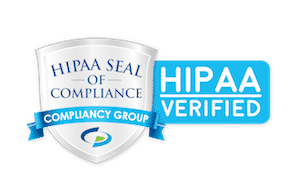In March, The National Quality Forum (NQF) issued a 96-page report which identified several areas of improvement necessary to patient safety and health IT (HIT) along with multiple recommendations.
The report, “Identification and Prioritization of Health IT Patient Safety Measures,” set out to provide top-level guidance to the measurement of health IT programs and safety.
“The implementation and use of HIT holds great promise for the overall improvement of healthcare quality in the United States” the report said. “However, in order to realize this promise, patient safety must be a primary focus for every stakeholder involved in the design, development, implementation, and use of HIT systems as those systems become increasingly integrated into all aspects of patient care.”
The report ranked nine technological areas where NQF sees potential problems along with remedies:
- Clinical Decision Support (CDS) – CDS systems can greatly improve patient care and safety if implemented properly. However, increasing the number of CDS systems and sensitivity of systems increases “alert fatigue” where providers receive too many alerts and begin to ignore warning signs. Thus putting patients at risk when the most serious alerts slip through the cracks. A good CDS system is able to reduce alert fatigue, using only the most relevant and up-to-date information and clinical relevancy.
- System Interoperability – While sharing of patient data is more common as of recent, most EMR systems still are not interoperable, causing issues of interface interactions between systems. Fixing this is certainly not easy, as many external factors are necessary to consider, such as regulatory agreements and cooperation between healthcare organizations.
- Patient Identification – Duplicate patient records are dangerous as this can involve sharing patient data across patient accounts erroneously. Errors in patient data is one of the leading human-computer interface issues due to problem #2, a lack of system interoperability. Fixing this issue is the responsibility of providers, healthcare organizations, payers, and even patients.
- User-Centered Design and Use of Testing, Evaluation, and Simulation to Promote Safety across the HIT Lifecycle – Poor user interface system design increases time to complete tasks, and with increased documentation needs and reliance on computer systems, is valuable time and money lost. The National Institute of Standards and Technology (NIST) recently released guidelines to improve this issue.
- System Downtime (Data Availability) – When a provider is relying on their information to always be available in the cloud, any down time causes slowdowns, delays, and backups in services rendered. To continue reliance on the system without burdening extra work on providers, ample backups and redundancies are necessary to reduce downtime to as little as possible
- Feedback and Information-Sharing – Sharing feedback with the community is important to ensure transparency and keeping new ideas evolving. Hardware, software, and users providing and sharing feedback will increase workflow and capabilities of health IT systems.
- Use of HIT to Facilitate Timely and High-Quality Documentation – As a patient needs care quickly, a health IT system needs to accept and process documentation swiftly. When many aspects of care are relying on the ability to access timely and high-quality documentation at a moments’ notice, the systems need to keep up.
- Patient Engagement – Patients are also responsible for staying engaged in their own care, and this is achieved through ease of communication with necessary providers and facilities. Continuous examination of how patients engage and why certain patients do not engage in their care is needed to reduce these barriers.
- HIT-Focused Risk-Management Infrastructure – The necessity for having health IT safety infrastructure primarily rests with healthcare organizations. However, vendors, such as YouScript, must also have similar mechanisms to quickly respond to and remediate hardware and/or software issues that cause safety risks and challenges.

